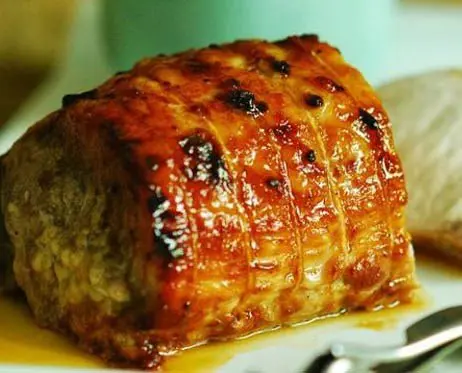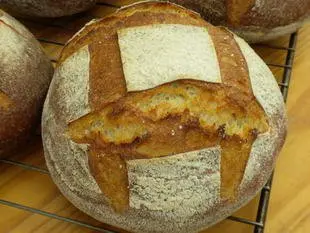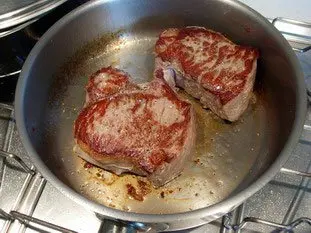To find out more...
Maillard reactions

With a name like that, they could well be some principle in mechanics, but in fact the term applies to something much closer to all of us: it's what gives food more flavour cooked than when raw!

You might think that there is nothing revolutionary in that, and that you already knew it: cooked meat has more flavour than raw meat! Of course that's true, but it took the good Monsieur Maillard to describe and explain the phenomenon.
In fact Maillard reactions crop up everywhere in cooking, and affect much of what we eat and drink.

- When the crust on a baked loaf is crisp and brown - that's them!
- When beer is brown (or amber-coloured) - there they are again!
- When coffee is dark after roasting and reveals its flavour
- When chocolate develops its delicious aromas after “cooking" the cocoa butter
- When the roast in the oven is covered with a fine and very tasty crust
- When the skin on fried chicken turns crispy
- When a dish just gets better and lightly browned on reheating
- You use your toaster
etc., etc.
If they are present, it's an excellent thing. It means that it's good, it's tasty, it has that great “properly cooked” flavour that I've already mentioned, and this is particularly true of cooking meat.
The consequence of all this is that we should try to encourage these reactions as far as possible. A simple example: when frying meat in a pan, it is better not to use a non-stick pan, so that the meat can stick on the bottom a little and the famous crust has a chance to form more effectively and more quickly. Unfortunately this can also stick well.

A final note on the subject – sheer genius – that I heard from the English chef Heston Blumenthal: if you cook meat in a non-stick pan, you can brown it beautifully in spite of this by turning the meat every 15 seconds throughout the cooking time. This needs to be done with tongs and not with a fork to avoid piercing the meat. It's a bit of a bind, but the result is remarkable!
PS : This also explains why those who enjoy steak tartare (which personally I find inedible, but each to his own…) are obliged to mix all manner of strong condiments with their raw meat: onion, herbs, sauces, egg yolk, etc., to give it some flavour. The same meat cooked would only need a sprinkle of salt and pepper, and voila!” … But at this point I'm just teasing my sister Isabelle, a real chip off the old block, who adores it just like her father!
Butter vs. grease
We often read in a recipe where a pastry is put into a mould that, just before pouring, the mould should be buttered or greased. But what's the difference between these 2 terms?December 1st 20258585
Getting out of the fridge early
Very often when you're cooking, you need to take food or preparations out of the fridge, to use them in the recipe in progress. There's nothing tricky about this: you just take them out of the fridge and use them, usually immediately, in the recipe. But is this really a good method?November 24th 20251,0365
Who's making the croissants?
When you look at a bakery from the outside, you naturally think that in the bakery, the bakers make the bread, and in the laboratory, the pastry chefs make the cakes. It's very often like that, with each of these professions having quite different ways of working, but sometimes there's also one...November 23th 2025931
Oven height
When we put a dish or cake in the oven, we naturally tend to put it on the middle shelf, and that's what we usually do. But in some cases, this position and height can be a little tricky, so let's find out why.October 8th 20252,5775
The importance of sieving
In recipes that use a fine powder (flour, powdered sugar, etc.), you'll often see the advice to sift before using it. To sift is to pass the powder in question through a sieve (a very fine strainer) before incorporating it into your recipe. It's often advice, but is it really useful?September 3rd 20257,4333
Fruits which can ruin your jelly
There are many ways of making a fruit mousse, but one of the simplest is to prepare a fruit jelly (basically a fresh fruit coulis with gelatine) and then mix this jelly before it sets completely with whipped cream. The result is perfect for filling a charlotte, for example. But do beware;...March 6th 201378 K4.0
Candied fruits: don't get ripped off
Do you like candied fruit? You might like to nibble a handful or add it to a recipe, like a classic fruit cake or delicious Italian specialities like panettone or sicilian epiphany pie.June 21th 201767 K 24.2
Beans in primeur
As I write this, it is the beginning of the short season for fresh beans. If you've never made them before and you're just starting out (and that's a great idea) you'll find that it's a bit time consuming to prepare, you have to shell them once, remove the beans, scald them to remove the skin (and...June 4th 202214 K
Well-cooked meat
Have you ever noticed that if you like your meat well done, it invites strange looks? For instance, in a restaurant, when asked “How would you like that cooked?” If you reply, “Well done,” it is almost as if you are swearing….May 21th 201134 K 14.4
The window-pane test in bread-making
The home bread-makers often ask themselves “Have I kneaded my dough long enough?” . A good question, as dough that is insufficiently kneaded will not rise properly or will fall flat when the top is slashed, which is very frustrating. To know when the dough is ready, one can rely on the length...June 16th 202196 K 23.9









